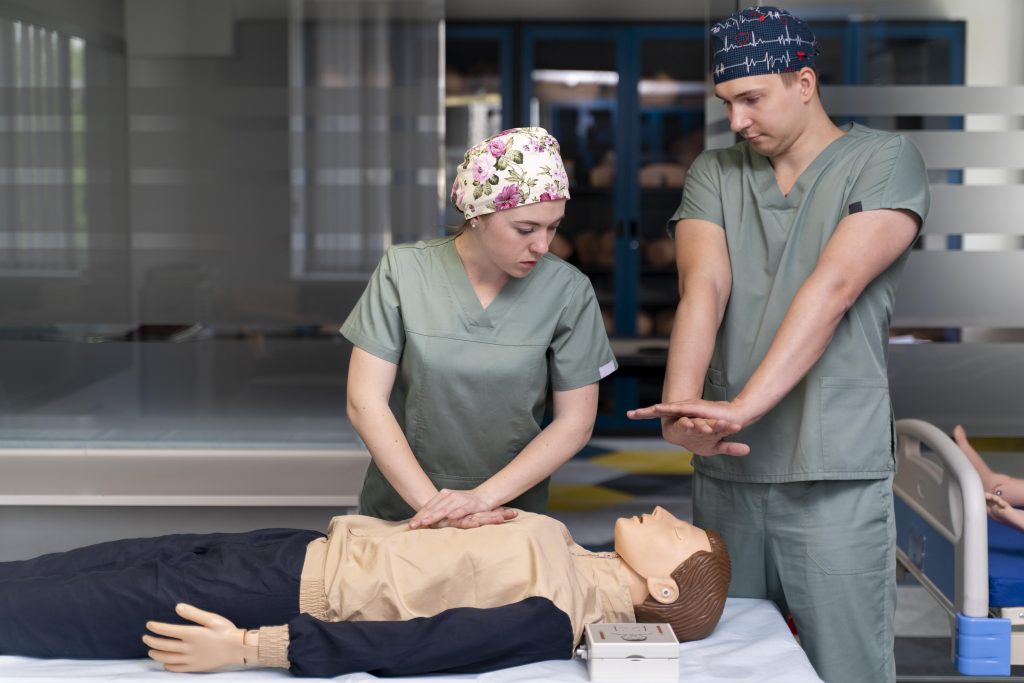Introduction
Advanced Cardiac Life Support (ACLS) is a crucial skill set for healthcare providers, but certain scenarios present unique challenges even for experienced professionals. Handling these high-stakes situations effectively requires quick thinking, expert knowledge of ACLS algorithms, and strong teamwork. In this article, we’ll explore some of the most challenging ACLS scenarios and how to manage them effectively.
1. Cardiac Arrest with an Unknown Cause
The Challenge:
- No clear cause of arrest (e.g., trauma, overdose, or underlying cardiac disease)
- No immediate response to standard CPR and defibrillation
How to Handle It:
- Follow the H’s and T’s to identify and treat reversible causes:
- Hypovolemia, Hypoxia, Hydrogen ion (acidosis), Hypo/hyperkalemia, Hypothermia
- Tension pneumothorax, Tamponade (cardiac), Toxins, Thrombosis (pulmonary or coronary)
- Continue high-quality CPR and epinephrine administration every 3–5 minutes.
- Consider ultrasound or ECG findings to guide further treatment.
2. Persistent Ventricular Fibrillation (VF) or Pulseless Ventricular Tachycardia (VT)
The Challenge:
- VF/VT does not resolve after multiple shocks and medication administration
How to Handle It:
- Ensure high-quality CPR and minimize interruptions.
- Optimize defibrillation: Use dual sequential defibrillation (placing pads in an anterior-posterior position and delivering consecutive shocks).
- Administer antiarrhythmic drugs (e.g., amiodarone or lidocaine).
- Consider underlying causes, such as electrolyte imbalances or myocardial infarction.
3. Pulseless Electrical Activity (PEA) Without an Identifiable Cause
The Challenge:
- Electrical activity on ECG, but no palpable pulse
- No immediate signs of reversible causes
How to Handle It:
- Continue high-quality CPR while rapidly assessing for reversible causes.
- Administer epinephrine every 3–5 minutes.
- Use bedside ultrasound to check for cardiac activity and assess for conditions like cardiac tamponade or massive pulmonary embolism.
- If tension pneumothorax or tamponade is suspected, perform appropriate emergency interventions (e.g., needle decompression, pericardiocentesis).
4. Asystole with No Response to Initial Treatment
The Challenge:
- No cardiac activity despite CPR and medications
- Unclear if resuscitation efforts should continue
How to Handle It:
- Confirm true asystole on multiple ECG leads (rule out fine VF, which may still be shockable).
- Continue high-quality CPR and epinephrine administration.
- Assess for reversible causes and correct if found.
- If no response after prolonged efforts, consider termination of resuscitation based on clinical judgment and institutional protocols.
5. Bradycardia Leading to Cardiac Arrest
The Challenge:
- Profound bradycardia (<30 bpm) deteriorating to asystole
- Poor perfusion despite initial interventions
How to Handle It:
- Start with atropine (0.5 mg IV every 3–5 minutes, up to 3 mg total).
- If atropine is ineffective, initiate transcutaneous pacing.
- Consider epinephrine infusion (2–10 mcg/min) or dopamine infusion (2–20 mcg/kg/min).
- Address underlying causes such as electrolyte imbalances, beta-blocker overdose, or hypoxia.
6. Post-Resuscitation Care and Sudden Re-Arrest
The Challenge:
- Patient achieves return of spontaneous circulation (ROSC) but then deteriorates again
How to Handle It:
- Stabilize hemodynamics with IV fluids and vasopressors as needed.
- Monitor oxygenation, ventilation, and perfusion to avoid hypoxia and hypotension.
- Perform targeted temperature management (TTM) to preserve brain function.
- Identify and treat the underlying cause to prevent re-arrest.
Conclusion
ACLS scenarios can be unpredictable and challenging, requiring quick decision-making, deep knowledge of protocols, and strong teamwork. By understanding and preparing for these difficult cases, healthcare providers can improve patient survival rates and outcomes.


